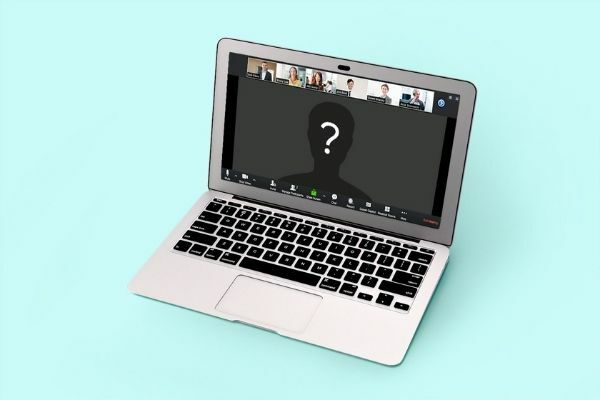Insights
INSIGHTS
All Topics
Seven ways to combat Zoom fatigue
19 Nov 2020by Christine Chiu
Does a day of video meetings leave you feeling drained? Stay positive and energised with our list of seven tips and tricks
Are you feeling a little ‘Zoomed out’ from all those video conferencing calls?
Despite Zoom’s obvious benefits for remote working, people are finding it tiring. Jobillico, a recruitment firm notes a few key symptoms of ‘Zoom-it is’. These include sore eyes, reduced focus, frustration, and lack of interest during video meetings.
National Geographic says that Zoom fatigue can apply to other videoconferencing platforms too. People are finding platforms like Skype, Teams and Slack exhausting. The publisher also says that videoconferencing is taxing because the other social cues we tend to take in aren’t available.
To combat videoconferencing fatigue, we take a look at the symptoms and how to turn them around to make your meetings engaging and exciting.
1.) Focus on the meeting
According to the Harvard Business Review (HBR), going into a meeting with the right frame of mind can change how productive you are.
To increase focus on the meeting, avoid multi-tasking. HBR suggests users, “close any tabs or programs that might distract you (e.g. your inbox or Slack), put your phone away, and stay present.
We know it’s tempting, but try to remind yourself that the Slack message you just got can wait 15 minutes and that you’ll be able to craft a better response when you’re not also on a video chat.”
2.) Cut out distractions
With video conferencing, it’s easy to get distracted by webpage notifications, phones, and other digital vices. To keep yourself motivated, use web blockers and timers to fight off online fatigue.
Wastenotime works really well for those on Google Chrome browsers. The extension is downloadable at no cost for charities. The extension has a timer which allows charity staff to set times for work and leisure. Personal social media sites can be turned off during the work day. By reducing distractions, charity staff can increase focus on meetings.
3.) Minimise your own video
Forbes has also covered the phenomenon of Zoom fatigue. The publication finds that video calls are ‘unnatural’ because you see your own face in addition to those you are speaking to. Normally, in face-to-face communication, your own reflection isn’t there.
Rather than focusing on others, people tend to focus on themselves or feel self-conscious. People scrutinise their own hair, glasses, or clothes. For maximum productivity, minimise your video screen so you can concentrate on others.
4.) Plan your meeting in advance
There’s nothing more awkward than silence on a video call. To reduce video conferencing fatigue, make sure that you absolutely need to set up a call. Use Microsoft Office Teams or Slack chat when you don’t need video.
A well planned, efficient meeting is also easier to follow. Make sure that your participants are well briefed, and ensure that you’ve got an agenda that’s relevant to everyone. Delegate a chairperson so that participants can all have a turn to speak and engage.
Make the best out of the video conferencing calls you do have by reserving time away from digital meetings. Vidyard recommends that teams designate a day a week for meetings, or establish a ‘black-out’ period of no meetings.
5.) Make your video calls more interesting
Make your video call more interesting by following our tips and tricks. When it comes to training exercises, making sessions interactive helps combat video fatigue.
Digital tools like hand raising, live polls, and chat functions make meetings more engaging. Interactive content energises the crowd and helps organisers gather feedback during the meeting.
Scheduling time for break-out rooms with fewer people also ensures that everyone gets a turn to participate.
6.) Let participants control their own video functions
Zoom and video conferencing platforms have let colleagues into our personal lives. People can now see into your home office. What if the kids run in? Or the dog barks? There are now more hard to control elements in our working environment.
Speaking to the BBC, Marissa Shuffler, an associate professor at Clemson University says, “When you’re on a video conference, you know everybody’s looking at you; you are on stage, so there comes the social pressure and feeling like you need to perform. Being performative is nerve-wracking and more stressful.”
Empowering colleagues to switch the video off means they can assess when the environment is appropriate to share on screen.
7.) Separate your work and home space
Zoom, Skype, Google Meet, and many others are now being used at home for both work and personal use.
Flockblog recommends organising your workspace and keeping your background tidy to emphasise professionalism.
If you can, separate where you work from where you relax. This applies to digital platforms as well as physical spaces.
If your free time looks too much like work you’ll struggle to enjoy yourself!
Christine Chiu
More on this topic
Recommended Products
Our Events
Charity Digital Academy
Our courses aim, in just three hours, to enhance soft skills and hard skills, boost your knowledge of finance and artificial intelligence, and supercharge your digital capabilities. Check out some of the incredible options by clicking here.


















